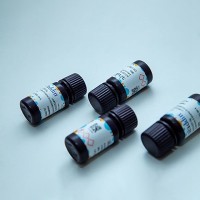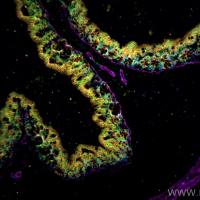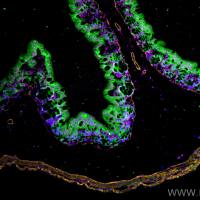Sequence-Specific DNA Labeling Using Methyltransferases
互联网
729
Sequence-specific labeling of native deoxyribonucleic acid (DNA) still represents a more-or-less unsolved problem. Difficulties mainly arise from the necessity to combine two different functions: sequence-specific recognition of DNA and covalent bond formation between the label and DNA. DNA methyltransferases (MTases) naturally possess these two functions and transfer a methyl group from the cofactor S -adenosyl-L -methionine (AdoMet) to adenine or cytosine residues within specific DNA sequences, typically ranging from two to eight base pairs. Unfortunately, the methyl group itself is a very limited reporter group and it would be desirable to transfer larger chemical entities with DNA MTases. Replacement of the methionine side chain of the natural cofactor AdoMet by an aziridinyl residue leads to the synthetic cofactor N -adenosylaziridine, which is quantitatively, base- and sequence-specifically coupled with DNA in a DNA MTase-catalyzed reaction. By attaching interesting reporter groups to a suitable position of N -adenosylaziridine a large variety of new synthetic cofactors are obtained for sequence-specific labeling of DNA. This method is illustrated by coupling primary amino groups and biotin to short duplex oligodeoxynucleotides or plasmid DNA using the DNA MTase M�Taq I.









